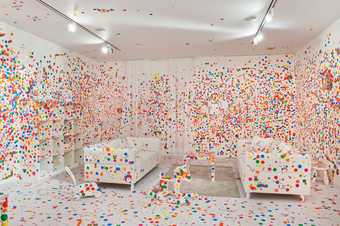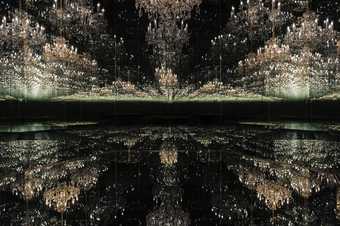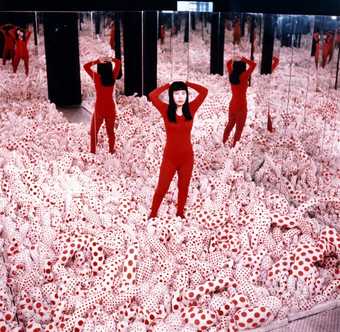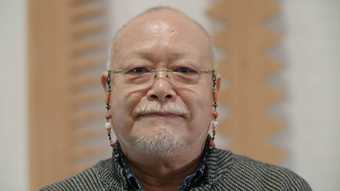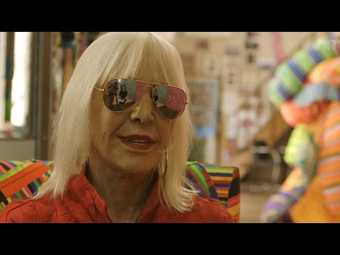At the start of the project, this room was completely white – white ceiling, white floor, white walls, white furniture. People come in, they are given a sheet of coloured stickers in different sizes, which have been produced specially for the project and in accordance with the artist’s specifications; her choice of colour, her choice of finish, and her choice of size. And then everybody is invited to place the stickers anywhere they like in the room, according to any pattern, any idea they have, anything they like they can do with the stickers.
Kusama is best known for her brilliantly coloured dotted surfaces, her installations with blow-ups and her walls covered in brilliant spots. And in her biography, she talks about experiences really of a very young child, almost sort of hallucinogenic experiences, where her vision of landscape and people was clouded by spots. And in her very, very first mature works of art, just after finishing art school in Kyoto, the spot emerges as a pattern in her work. And from that period of time, she comes back to the spot with great regularity, and by the end of the sixties, she is actually painting a landscape, she’s painting spots on people’s bodies, onto animals, and the spot becomes a very regular motif throughout her work.
It’s her way of kind of covering the surface. It’s a reflection of her vision, but it’s also a way of embracing the whole world in a kind of overall pattern. And the interesting thing about this work in particular is that where she’s moved from creating an environment of spots that we passively appreciate or enjoy a walk through, she has now moved on to actually involving the audience in the creation of this dotted, spotted interior.
I think Kusama is now seen alongside people like Murakami or Damien Hirst, or Jeff Koons as a kind of globally branded artist. Her spots are ubiquitous, and they are instantly recognisable. They are on the face of the London tube map at the moment. Everywhere we go we see...to the biennials and triennials across the world, you see big Kusama installations. But what is also important to recognise is she really does fit into art history, and she was there in late Surrealism, she was there at the birth of Pop. She has a relationship to Minimalism, she’s a real key practitioner in the beginnings of performance and action art. So she’s very much somebody who is an insider, but she was never attached to any one movement for very long, so she’s always...also somebody who kind of is an outsider. She moves in and out of the kind of principal avant garde moments of the mid to late twentieth century.
And now she stands beside them, because she has got that status where she is a kind of unique, almost celebrity artist of our era.
Yayoi Kusama's interactive Obliteration Room begins as a white space which visitors are invited to cover with stickers. Over the course of a few weeks the room is transformed from a blank canvas into an explosion of colour, with thousands of spots stuck over every available surface.
TateShots produced this timelapse video of The Obliteration Room covering the first few weeks of its presentation at Tate Modern. It was conceived as a project for children, and was first staged at the Queensland Art Gallery in 2002.

